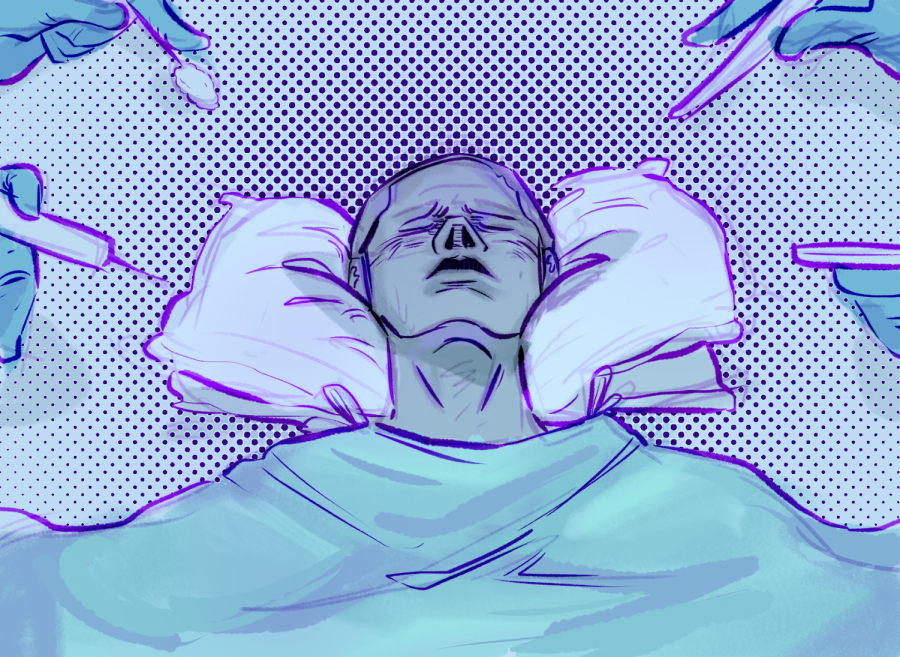UT researchers use COVID-19 vaccine technology to tackle high-fatality virus
December 19, 2021
Editor’s Note: This article first appeared in the December 2 broadsheet.
Researchers at UT created the first ever treatment for a fatal virus by utilizing a similar antibody technology that was used to develop COVID-19 treatments.
Researchers examined the Crimean-Congo hemorrhagic fever’s protein structure and found the presence of two antibodies that combine to create a “bispecific antibody” which eliminates the virus, researcher Akaash Mishra said. In November, University researchers, along with collaborators from other institutions across the country, released their findings, which is the first potential treatment reported for the virus, Mishra said.
“The bispecific is actually currently under clinical development to be used as a therapeutic against the virus,” said Mishra, a chemistry and biochemistry Ph.D. candidate. “Meaning, let’s say if a person from the U.S. … needs to go to continents where this virus is endemic, … they could actually get a prophylactic shock with one of these antibodies and stay protected for several weeks.”
The virus is caused by ticks and can lead to serious complications in humans. In 2018, the World Health Organization identified the virus as one of its top priorities for research. The virus is endemic in Europe, Africa and Asia, and it is unclear how many cases there are worldwide, according to the National Library of Medicine.
“People infected with it could get this hemorrhagic fever,” said researcher Jason McLellan. “Thirty to 40% of infected people die, so it has a very high case fatality rate. And we had access to blood samples from people who had survived (the virus’) infections. So we have a source that we can isolate antibodies from and develop them into interventions.”
The group is still continuing research to create a vaccine candidate from their research, but Mishra said development for a candidate is dependent on how authorities in the countries where the virus is present handle treatment.
The team of researchers collaborated with the Prometheus Consortium for the research, which McLellan said is a group dedicated to developing therapeutics and vaccines for pathogens. McLellan said his group was required to choose among the WHO’s list of high-priority pathogens and they chose this virus.
McLellan said their strategy to create the Crimean-Congo hemorrhagic fever treatment was similar to some COVID-19 treatments. He said the fever’s antibody is similar to Regeneron, which is a single infusion antibody cocktail given to COVID-19 patients to lessen their symptoms and help them fight the virus.
“Our collaborators isolated hundreds of antibodies from a survivor of (the fever), and then they were down-selected to top candidates that we were able to say potently neutralize the virus at low concentrations of the antibody,” McLellan said.
Mishra said it is important that researchers focus on Crimean-Congo hemorrhagic fever because the virus’s expansion could potentially bring cases to the United States.
“I hope what we have done so far … helps in the development of better vaccine candidates for (Crimean-Congo hemorrhagic fever),” Mishra said. “The endemic zones have been expanding in the past few years and before a threat happens in the United States, we need to be prepared for that.”












